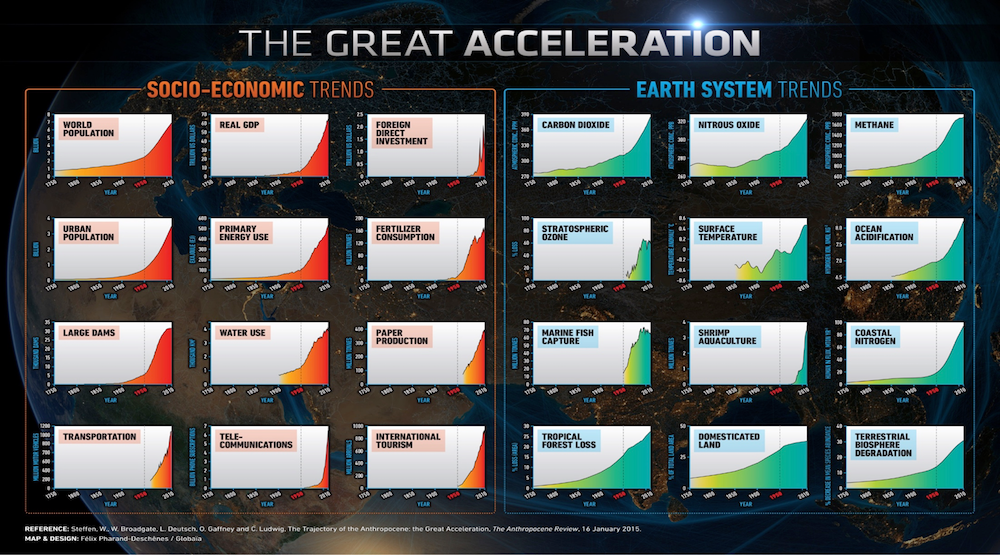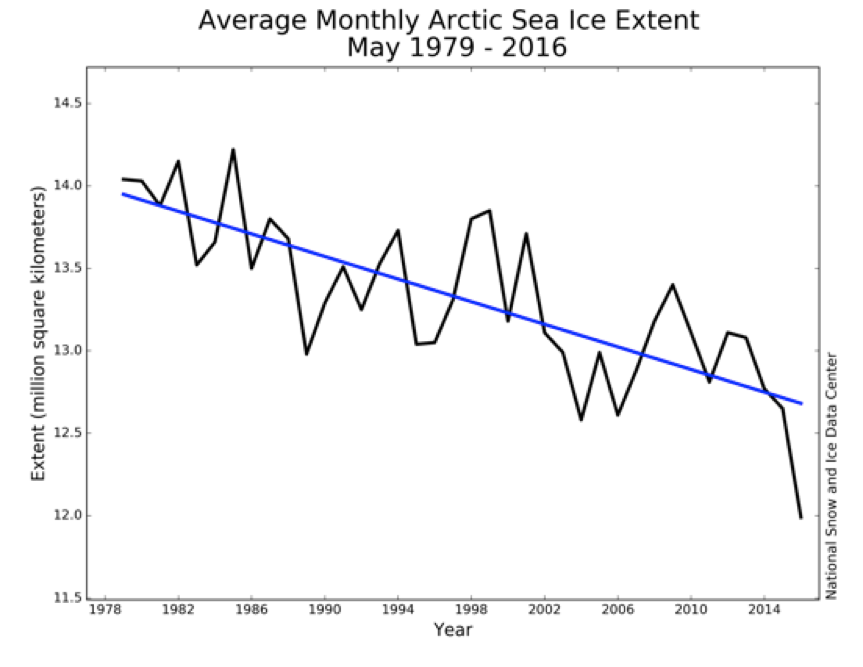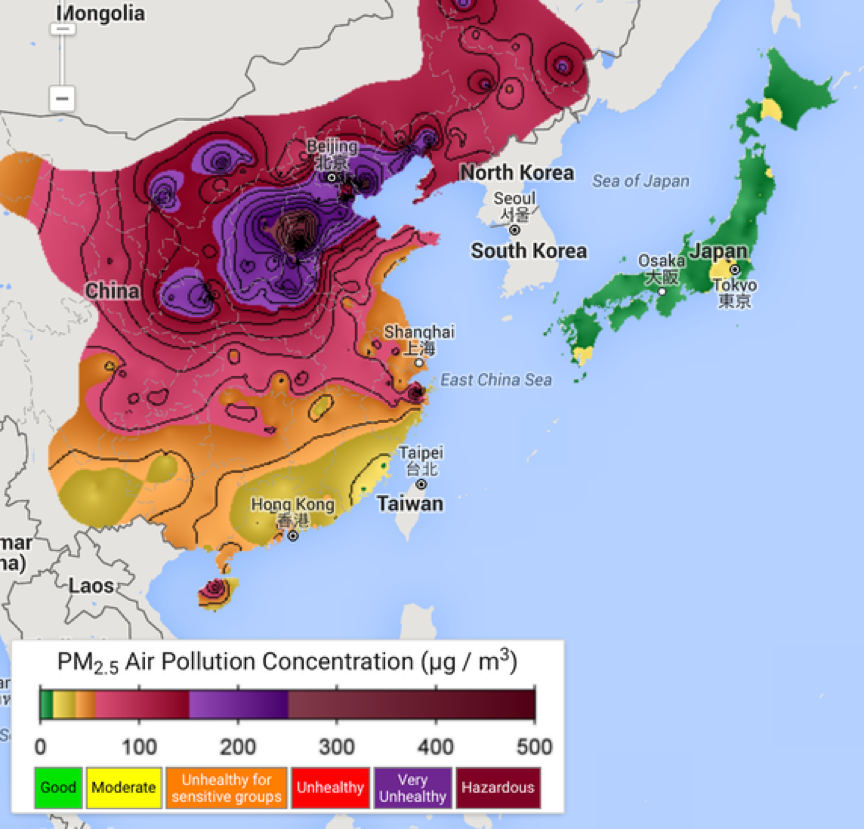Video: State of the Planet 2017
We believe astrobiologists are on the cusp of discovering an intelligent technologically-advanced civilization … on Earth. We wanted to produce an animation on the state of the planet. It coincides nicely with Earth Day and the March for Science.
We worked with a brilliant Stockholm animation company BRIKK.
Read this oped by Josh Tewksbury, Director of the Future Earth Global Hub in Colorado, about the integrity of science.
Join the conversation on the Open Network powered by Future Earth.
And support international coordination of research. It matters.
Annotated script
Is there intelligent life in the universe? How about Earth?
Farms, villages, towns and cities, our art and culture, stories and music, science and engineering, education, society. Everything we know and love today developed on a stable, resilient planet. It wasn’t too hot, not too cold. Scientific evidence shows global average temperatures changed no more than plus or minus one degree Celsius.
But something stirred here 60 years ago, and still grows exponentially. We now use an area the size of South America for our crops and the size of Africa for our livestock. We’ve produced enough concrete to cover the planet, and enough plastic to cling film it.
International research shows the atmosphere, the oceans and the lands are changing at alarming rates. Up to this point, 2014 was the 3rd warmest year on record. 2015 came second, and, yes, you guessed right, 2016 is the warmest year ever measured. Human-induced climate change is no longer a theory. Arctic sea ice is collapsing rapidly. Coral reefs are dying. Fish stocks that feed 3 billion people are at capacity. Choking clouds of pollution stretch across continents.
Global average temperature is now 1.1 degree Celsius. We are smashing through planetary boundaries. Climate, deforestation, fertiliser use, biodiversity. We are approaching irreversible tipping points in the Amazon, the Arctic and Antarctica. We are causing the 6th mass extinction.
So…is there intelligent life on Earth?
Science shows carbon dioxide emissions growth has stalled in the last three years.
The ozone hole is stabilising and may fully recover.
We’re eradicating diseases. Life expectancy globally is now 71 years.
The average number of children per woman in the world is down to 2.5.
Every child’s birthright is a stable, resilient Earth. This is at risk.
We need science and society to work together for a sustainable planet. We need a worldview based on facts not fiction. We need development that stores carbon, not emits it. That purifies water, soil and air, not pollutes them. That enhances biodiversity, not destroys it.
And right then, we might just find intelligent life on Earth.
1. For 11,000 years during the geologic epoch called the Holocene, the Earth’s climate and environment were remarkably stable – existing within a series of what scientists call “planetary boundaries.” These nine boundaries may have been critical to the emergence of human civilisation. Research from 2009 and 2015, however, shows that people have pushed the planet beyond four of those boundaries by driving up global temperatures, clear-cutting forests, dumping fertilisers into rivers and oceans and degrading natural ecosystems. Such actions, the researchers argue, could shift the planet out of its “safe operating space” and into a zone of uncertainty.
2. For most of recorded history, from the dawn of agriculture up until several decades ago, global temperatures never climbed or fell by more than one degree Celsius. To learn more, read this story from the Washington Post.

Reference: Steffen et al., 2015. Design: Globaïa
3. The 1950s mark the start of what scientists call the “Great Acceleration” (see graphic at right) – a period of profound change that saw rapid shifts both to the environment (right) and human society (left).
4. See this 2011 paper in Nature on “Solutions for a cultivated planet.” South America extends over a whopping 1.8 billion hectares, and Africa occupies roughly 3 billion hectares, almost a quarter of the planet’s ice-free land.
5. In 2017, researchers estimated the weight of the “technosphere” – everything humans have built to keep themselves alive on Earth (and off). That includes houses, factories, roads, farms, computer systems, smartphones and landfills, all of which weigh in at 30 trillion tonnes. In 2016, scientists estimated humans had produced around 5 billion tons of plastic, “enough to wrap the Earth in a layer of cling film, or plastic wrap.” The same year, scientists crunched the volume of all of the concrete that humans have produced throughout history – around half a trillion tonnes. More than half of that concrete has been produced in the last 20 years.
6. See the latest report from the peer-reviewed Intergovernmental Panel on Climate Change. The Working Group I summary for policymakers explores the physical science basis of climate change.
7. According to NASA, 16 of the 17 warmest years ever record have occurred since 2000. The last three years have consecutively broken temperature records with 2016 as the warmest, helped by a strong El Niño, part of a natural cycle in the Pacific Ocean. But for climate, the long-term trends are what really count. And each decade in the last 40 years has been consistently warmer than its predecessor. XKCD has a great timeline of temperature going back 20,000 years.
8. Here we are using the popular definition of “theory” not the academic one. We say that human-induced climate change is no longer a theory, meaning the evidence is overwhelming and there is no credible counter-theory. For example, there is no evidence that natural forcings have caused the warming experienced globally in the last four decades.

Graphic: U.S. National Snow and Ice Data Center
9. Data from the U.S. National Snow and Ice Data Center show that since the 1970s, the area of sea ice, or ice floating in the ocean, in the Arctic has plummeted (see graph at right). Some researchers say that within years, there could be no sea ice in the Arctic in summer months.
10. Coral reefs are in trouble: Aerial surveys of the Great Barrier Reef off the coast of Australia have revealed the second year in a row of severe “coral bleaching” – leading one scientist to say that the reef is in a “terminal stage.” Here’s a recent article summarising the state of coral reefs and the pressure they are under.
11. Around three billion people rely on wild and farm-raised fish as a source of protein in their diets. In 2016, the UN’s Food and Agriculture Agency estimated that 31.4% of assessed fish stocks around the world were fished at unsustainable levels. Only 10.5% of fish stocks were “underfished.” However, applying sustainable management practices could increase fishery yields and generate profits.

Map: Berkeley Earth
12. See this real-time map of air pollution around the world from Berkeley Earth. In 2017, air pollution has hit “very unhealthy” or “hazardous” levels in large parts of China and India (see map at right).
13. The World Meterological Organization reports that temperatures have reached 1.1°C above the average temperatures from before the start of the Industrial Revolution.
14. Tipping points are radical changes in Earth’s chemistry, biology, geology and more. Once Earth moves past these points, it’s difficult to return the state of the planet back to the way it was before. This 2016 paper estimates where tipping points exist for the Amazon, Arctic and Antarctica.
15. Human activities are wiping out species at mass extinction rates. Humans are on course to drive as many species extinct as the asteroid that killed off the dinosaurs, the most recent of the planet's five "mass extinction events."
16. The Global Carbon Project has shown that for three years running, the growth of carbon dioxide from global fossil fuel emissions has stalled.
17. Nearly 30 years after the world decided to take action to protect the ozone hole, there are signs it is “healing,” according to research in the journal Science.
18. Small pox was eradicated in 1977. Guinea worm disease and polio are close to being gone for good. Learn more here.
19. “Life expectancy increased by 5 years between 2000 and 2015, the fastest increase since the 1960s,” the World Health Organization reports.
20. Current rates of fertility are close to what scientists call global “replacement fertility” – or the fertility rate at which the world’s population size stays constant. Under the current level of mortality, the global replace fertility is 2.3. The world’s population is still increasing, but that is because of increasing lifespans and population momentum. See this report from the UN Population Division for more information.
21. In its Global Commons in the Anthropocene: World Development on a Stable and Resilient Planet report, the International Institute for Applied Systems Analysis (IIASA) argues “that humanity must be the steward of the planet’s natural resources – the ecosystems, biomes and processes that regulate the stability and resilience of the Earth system, for example the carbon cycle."
22. In his recent book Earth in Human Hands, astrobiologist David Grinspoon argues that any intelligent, technologically advanced civilisation would likely find a way to live in harmony with other life on its home planet, or be doomed to fail. This harmony has yet to emerge on Earth, but the outlook is beginning to look better.
DATE
April 21, 2017AUTHOR
Owen GaffneySHARE WITH YOUR NETWORK
RELATED POSTS
Spotlight on LMICs – Tired of Breathing in Pollutants? Time for Better Fuel Economy and Vehicle Standards
Future Earth Taipei Holds 2024 Annual Symposium
Spotlight on LMICs – The Future’s Juggernaut: Positioning Research as Anchors for Environmental Health